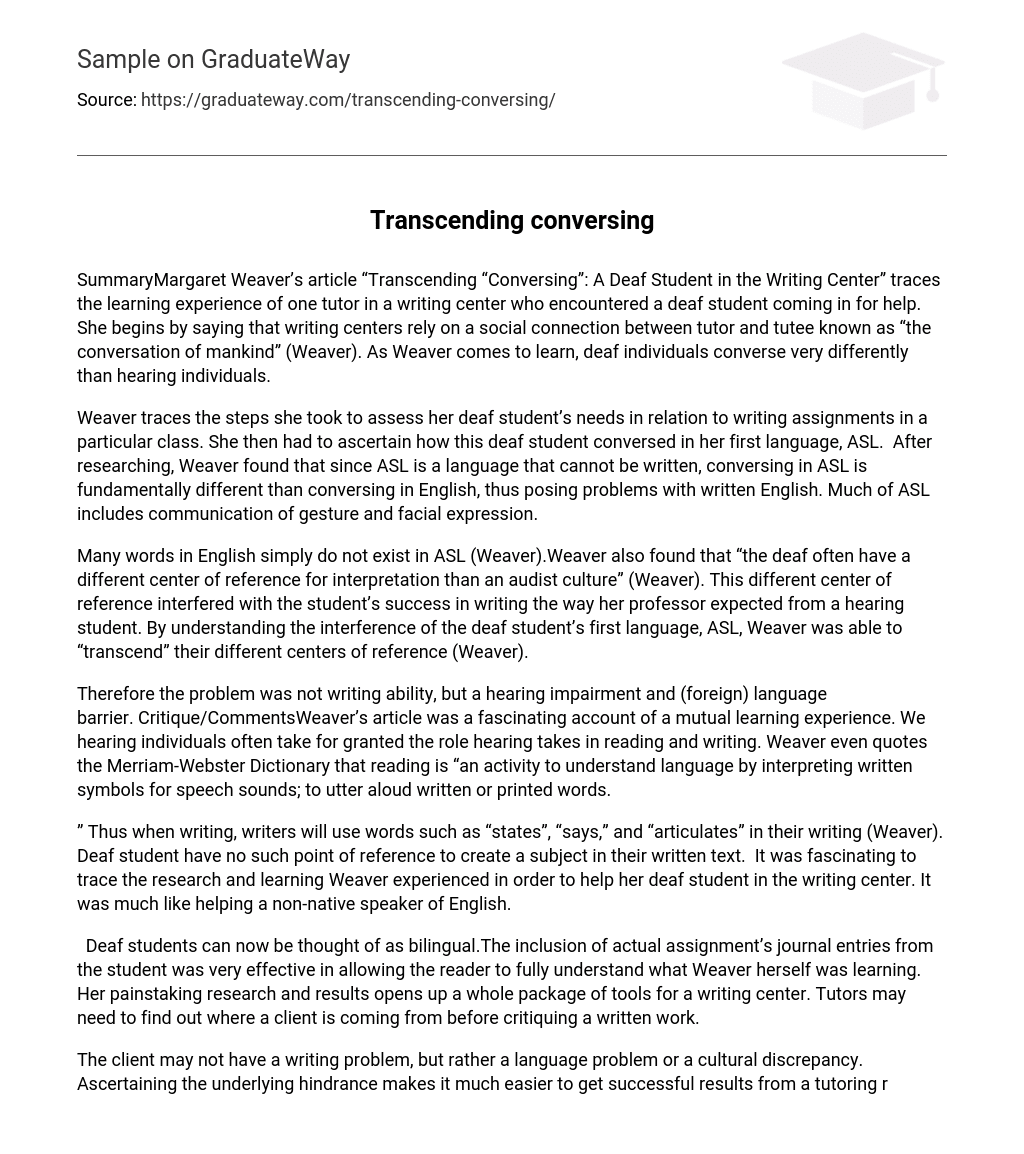SummaryMargaret Weaver’s article “Transcending “Conversing”: A Deaf Student in the Writing Center” traces the learning experience of one tutor in a writing center who encountered a deaf student coming in for help. She begins by saying that writing centers rely on a social connection between tutor and tutee known as “the conversation of mankind” (Weaver). As Weaver comes to learn, deaf individuals converse very differently than hearing individuals.
Weaver traces the steps she took to assess her deaf student’s needs in relation to writing assignments in a particular class. She then had to ascertain how this deaf student conversed in her first language, ASL. After researching, Weaver found that since ASL is a language that cannot be written, conversing in ASL is fundamentally different than conversing in English, thus posing problems with written English. Much of ASL includes communication of gesture and facial expression.
Many words in English simply do not exist in ASL (Weaver).Weaver also found that “the deaf often have a different center of reference for interpretation than an audist culture” (Weaver). This different center of reference interfered with the student’s success in writing the way her professor expected from a hearing student. By understanding the interference of the deaf student’s first language, ASL, Weaver was able to “transcend” their different centers of reference (Weaver).
Therefore the problem was not writing ability, but a hearing impairment and (foreign) language barrier. Critique/CommentsWeaver’s article was a fascinating account of a mutual learning experience. We hearing individuals often take for granted the role hearing takes in reading and writing. Weaver even quotes the Merriam-Webster Dictionary that reading is “an activity to understand language by interpreting written symbols for speech sounds; to utter aloud written or printed words.
” Thus when writing, writers will use words such as “states”, “says,” and “articulates” in their writing (Weaver). Deaf student have no such point of reference to create a subject in their written text. It was fascinating to trace the research and learning Weaver experienced in order to help her deaf student in the writing center. It was much like helping a non-native speaker of English.
Deaf students can now be thought of as bilingual.The inclusion of actual assignment’s journal entries from the student was very effective in allowing the reader to fully understand what Weaver herself was learning. Her painstaking research and results opens up a whole package of tools for a writing center. Tutors may need to find out where a client is coming from before critiquing a written work.
The client may not have a writing problem, but rather a language problem or a cultural discrepancy. Ascertaining the underlying hindrance makes it much easier to get successful results from a tutoring relationship even without the “conversation of mankind” (Weaver). Even the deaf student concluded that the writing center can provide “wonderful encouragement to deaf students in the years to come” (Weaver). Weaver, Margaret E.
“Transcending “Conversing”: A Deaf Student in the Writing Center” In The St. Martin’s Sourcebook for Writing Tutors. 3rd Ed. Christina Murphy and Steve Sherwood.
Boston. New York: Bedford/ St. Martin’s, 2008:274-284.





